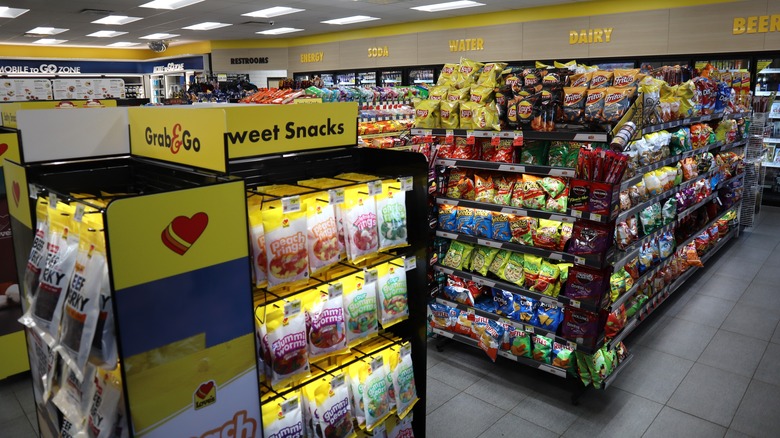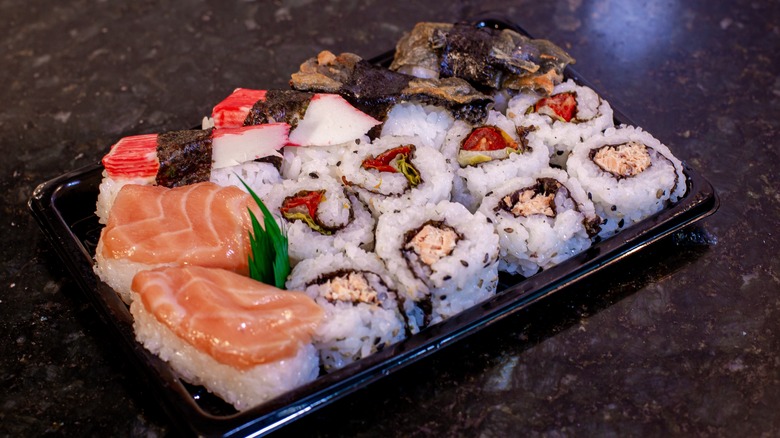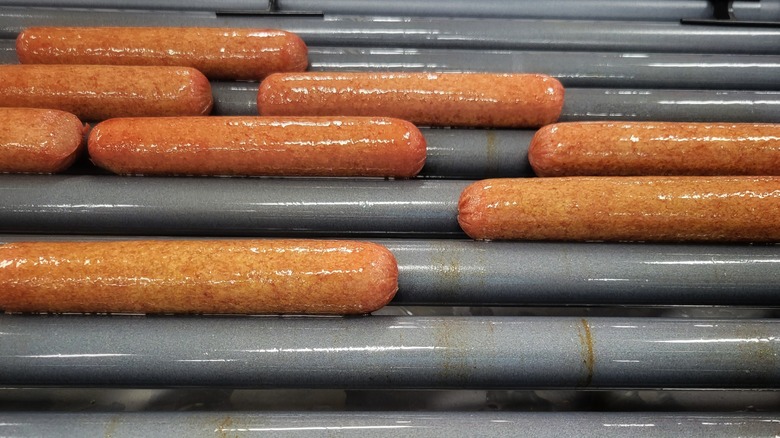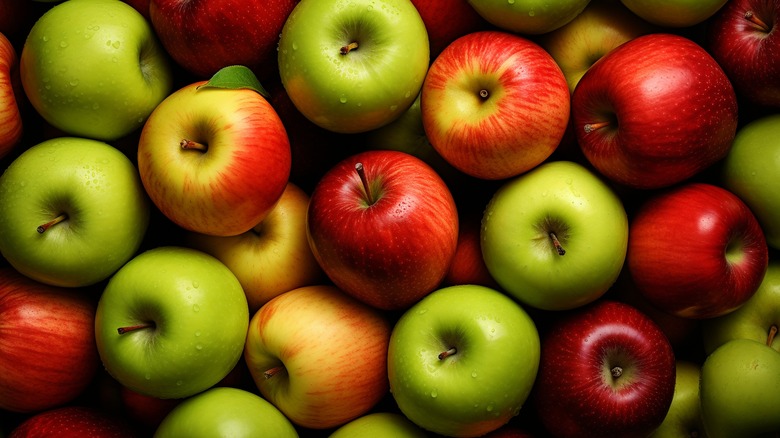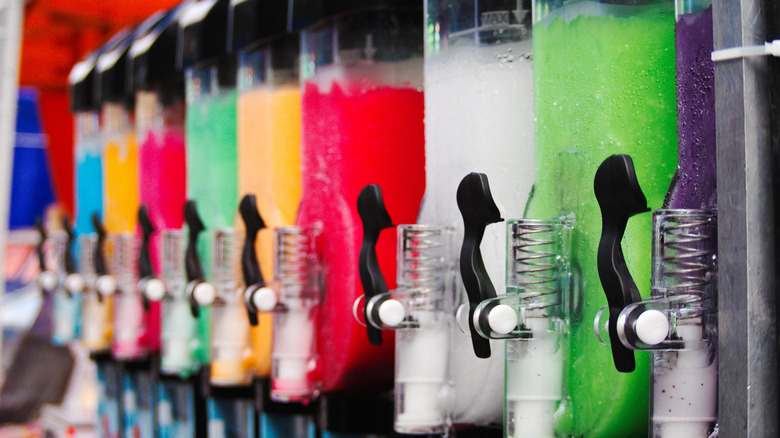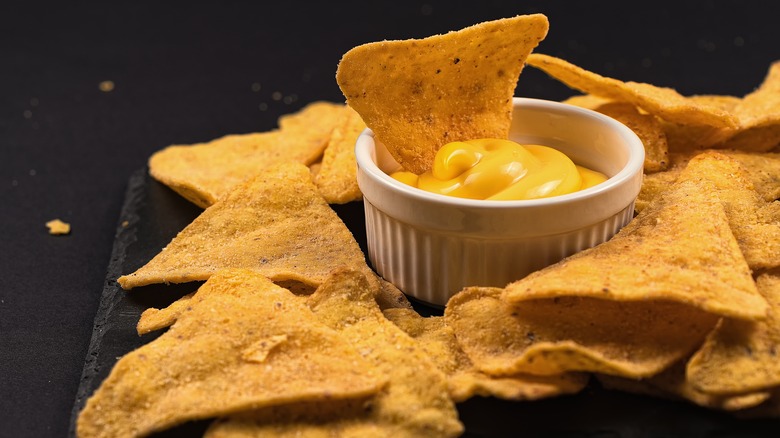5 Food Items You Never Should Buy At A Gas Station
The gas station: an oasis in the desert for those out on the open road on a journey across the country; convenient halfway point for day trippers; and quick stop for every drive in between for work and play. Offering up everything from actual gas to electric charging points to restrooms to, yes, food, gas stations are an essential part of driving and refueling in every sense. But whether you're looking for a quick grab-and-go breakfast or a decadent dish, gas station food should be viewed with a discerning eye.
Sure, Northeast Wawa aficionados and Southeast Sheetz devotees will have handmade subs, quesadillas, and other treats crafted to order. But for those more middle-of-nowhere spots out on America's highways, there may be less artisan options. Food may not be as fresh, certain items may be more than double the cost of what you'd normally pay, and still other things may not be held at the right temperatures or, worse, could be long out of date. From questionable storage methods to extreme markups in price, here are the five food items you should skip next time you're hungry at the gas station.
1. Sushi
Gas station sushi has long been a punchline for any and all jokes related to food poisoning, tummy troubles, and other road-tripping risks. It's not surprising, either. The idea of freshly made sushi sitting in an obscure gas station along this country's twisting highways — sometimes practically a day away from the oceanfront — is somewhat unrealistic. And, to be honest, it's hard to imagine why anyone would want to seek out sushi that's been sitting in a gas station cooler anyway.
If you've made a rest stop and are craving sushi (for whatever reason), rolls without any raw seafood will have the least likely chance of containing anything spoiled. California rolls, for example, which feature imitation crab, rice, avocado, and cucumber, are a fairly safe choice. Rolls that do contain raw items, however, carry a higher risk of parasites and can go bad incredibly fast. For instance, lower quality sushi is made with tuna scrape — basically, the meat that remains after filets are removed as whole cuts. It's been linked to salmonella outbreaks, too (via the Centers for Disease Control and Prevention), and is sort of reminiscent of "pink slime" from the beef industry. Suffice it to say, eating uncooked fish is a bit of a risk no matter what, so it's best to leave said risk for a legitimate sushi restaurant — not a gas station.
2. Hot dogs
Walking into a gas station to refuel both car and body, a quick all-American store-bought hot dog may seem like the perfect bite to get your head back in the game. However, gas station hot dogs — the ones sitting and slowly rotating under a heat lamp — may be host to some problems. First, there's no telling how long said wieners have been sitting there. And too often, there isn't any sort of sneeze-guard or protection from outside elements — including the fingers and germs of other patrons. Most seriously, though, is the fact that the heat lamps may not be keeping those dogs at the proper temperature to ensure safe eating.
According to Food Docs, hot dogs that are on roller grills need to be kept at 135 degrees Fahrenheit or higher to avoid the growth of bacteria like listeria, which would absolutely ruin your road trip a la vomiting, diarrhea, and stomach cramps. Additionally, hot dogs should be discarded at the end of the day, even after a few hours in some cases, so as to ensure their freshness.
3. Fresh fruit and produce
Let's say you've walked into the gas station and have steered clear of the "bad" stuff. No chips, beef jerky, or mini packs of doughnuts for you. No, you're heading straight for the fresh fruit. An apple or a banana sounds like just the thing to eat while you continue on your road trip. But opting for fresh fruit and other produce at the gas station — though admirable — may be a bit misguided. Fresh items like fruits and vegetables are more often than not marked up considerably in price at the gas station due to lower turnover. A single banana at the supermarket — like Walmart — may cost you around 27 cents. At the gas station (we checked Sheetz and Wawa), the tropical fruit may run you anywhere between 59 and 99 cents.
In addition to the overpriced nature, fresh produce at the gas station may not be that fresh. Because of that lower turnover, a lot of produce has likely been hanging out in cold storage for longer than anyone would like to admit. That could mean the apple you're about to grab was picked months ago and was sitting — somewhere — for quite some time, or the pre-cut fruit you're eyeing is nearing or past its prime.
4. Slushies
If there's one impulse buy that many of us feel drawn to, it's got to be the gas station Slushie. Referred to by different monikers depending on your gas station of choice, these brightly colored ice-based drinkable desserts are the perfect combination of brain freeze, colors that don't occur in nature, and sugar — so much sugar. But in terms of grab-and-go at the gas station, this is definitely one you should skip.
According to the York Daily Record, gas stations and convenience stores are notorious for mold, mildew, and other gross and slimy stuff hanging out in ice machines, soda fountains, and, yes, slushie machines. Those machines need to be meticulously cleaned in order to avoid these nasties, which can lead to all manner of intestinal issues and food poisoning. The fact of that matter, though, is that health inspectors often find that said machines are not cleaned properly, leading you, the consumer, to take a chance every time you take a sip.
5. Nachos
These aren't the delicious nachos you love to order at your favorite restaurant; the ones topped with three kinds of cheese, black beans, chorizo, fresh cilantro, and crema. No, we're talking about those round, slightly stale tortilla chips topped with bright, unnaturally orange "cheese" (sometimes featured on the side for dipping). There may even be some salsa if the gas station you're visiting is fancy.
Gas station nachos make the avoid list because of the frequent inability of these establishments to keep certain foods at a safe temperature. Nachos — namely, that nacho cheese — needs to be kept above 135 degrees Fahrenheit to kill off any bad-for-you organisms, according to the FDA. However, premade nachos may get overly soft being held at said temperature, so either way, you're not in for a great eating experience.
Those holding temperatures are no joke. In 2017, one person died and many more were hospitalized after eating contaminated nacho cheese at a California gas station. The cheese in question was tainted with botulism — a paralytic illness caused by a toxin found in foods that are not properly processed or stored.
